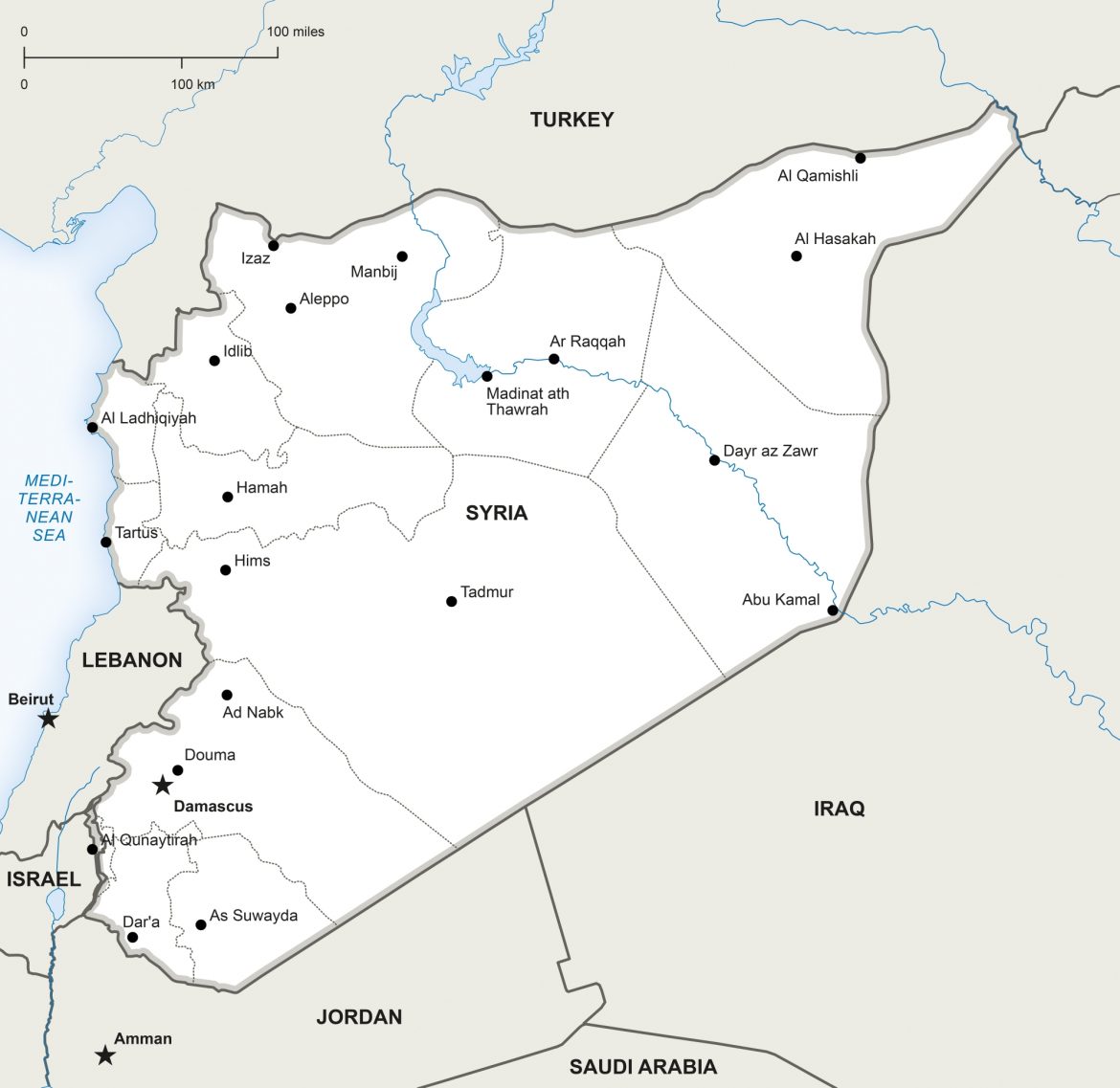Image source: ec.europa.eu
The Syrian quagmire is finally nearing a certain status quo. ISIS has been stripped-off its quasi-state form and forced back to operate as a traditional insurgency. The defeat can mostly be credited to the efforts of the U.S.-led International Coalition and its embedded local indigenous multi-ethnic group, the Syrian Democratic Forces (SDF). On the other hand, the Assad regime is has regained more than half of the national territory and now controls over 75% of the Syrian population. The opposition forces are utterly degraded and boxed into a few isolated patches of land in the western parts of Syria. Largely abandoned by their wealthy backers, inter-Rebel skirmishes further polarized the opposition between Islamists and hardcore militant Salafist (Jihadists). Turkey has made good use of their situation to further its own anti-Kurdish agenda on the borderlands with Operation “Euphrates Shield” (2016-2017) in northern Aleppo countryside, and Operation “Olive Branch” (2018) in Afrin canton. But resulting from the Loyalist success in the civil war, geopolitical objectives are being translated into practice by the two main external backers of the Regime. The Russian Armed Forces as well as the Iranian-backed Shi’a paramilitary groups have played a key role in emboldening the Assad regime and degrading the Opposition – which enabled the two backers to satisfy their initial objectives.

Russia’s military intervention launched in mid-2015 was mostly motivated by long-term strategic goals that sought to undermine NATO’s southern flank and forward the agenda of resurgence. Inherently, the Russian Federation will now maintain a permanent military presence in the Mediterranean Sea and the Levant amid the end of the Syrian Civil War. The Latakia Air field, initially established a center of operations against ISIS, will now continue to host dozens of fighter jets and bombers; while the Naval Facility of Tartus, leased since the early 70s to Moscow, will be enhanced to form a Mediterranean Fleet consisting of a nuclear submarine and 11 warships. Guarded by the advanced S-400 anti-air system, the Russian military-assets on the Syrian coastline form a new Anti-Access Area Denial Zone (A2/AD). Russia has invested considerable energy into developing A2/AD capabilities and carefully positioning them to maximize their strategic effect. That process accelerated after the seizure of Crimea. A2/AD bubbles are purposed to deny an adversary’s forces access to a particular region or otherwise hinder freedom of maneuver – it includes, but it is not limited to: anti-air defense systems, counter-maritime assets and theater offensive strike weapons. The strategic ramifications of the action underpinned on the Syrian coastline are to vanguard the Bashar al-Assad regime in Damascus, challenge NATO’s freedom of maneuver on its southern flank and enhance Russia’s geopolitical posture and security needs throughout the region and the world.
In addition, the Russian expeditionary forces, mechanized units and fighter jets have been operated and moved as far as Syria’s central and eastern provinces. The Tiyas (T4), Shayrat (hit by U.S. tomahawk cruise missile in mid-2017) and Deir ez-Zor Air Bases are jointly operated by Syrian, Russian and Iranian forces. The Kremlin made good use of those assets to establish a forward operational presence stretching to the mid-Euphrates river valley, that is only contained by the U.S-backed Syrian Democratic Forces (SDF) present on the river’s eastern shores. The Russians are not only attempting to close the airspace in western Syria and contest the eastern Mediterranean, but also to establish a pro-active military expeditionary presence seeking to profit from U.S. disengagement in the Middle East. Such undertakings are projected to expand into Iraq, Libya and possibly Egypt.
The strategic diagnosis will, however, encounter several “black swans”. Given the current geopolitical environment, Russia’s plans are caught between a rock and a hard place. The Kremlin is playing Russian roulette in the Israeli-Iranian divergence. It is simultaneously attempting to maintain its military cooperation with the Lebanese Hezbollah, Palestinian militias, Iraqi PMUs and al-Quds forces of the Iranian Revolutionary Guards Corps (IRGC), whilst pivoting with Jerusalem. This gamble has proven reckless and inefficient in recent deteriorating conditions. Operations security (OPSEC) and asset-protection has also been dangerously poor. Recent Rebel attacks on the Latakia Air Base show that Russia and the Syrian Regime are unable of fully securing vital and strategic bases from unsophisticated acts of aggression. This is only a taste of the long-term insurgency facing the Russian presence there, as the Kremlin continues to support a genocidal government formed by an Alawite minority in a predominantly Sunni, but hyper-complex, societal landscape. This is without mentioning the Turkish-Kurdish showdown developing in Afrin that further complicates a permanent settlement.

In the long-run, the creation of AD/2D bubbles on NATO’s flanks is counter-productive for the Kremlin. Moving advanced air defense and tactical nuclear weapons on Allied borders will only urge its richer and more capable Western adversaries to further proliferate precision-strike missile systems. This is a tech race that Moscow cannot keep up with, given its worsening economy and obsolete weapons industry. The United States will maintain strategic supremacy for the near future regardless of attempts from foes to compete. This should not downplay that Russian interference in the most contested region of the world has severely complicated the local dynamic and has strongly hampered Western strategic goals in the area. Now, more than ever, the Southern Flank needs to gain traction as a theater of utmost interest for NATO and Euro-Atlantic strategists.
Read an extended version of this assessment on T-Intelligence.
Please note that the views expressed are those of the author and do not necessarily represent or reflect the views of Munich European Forum e.V.
